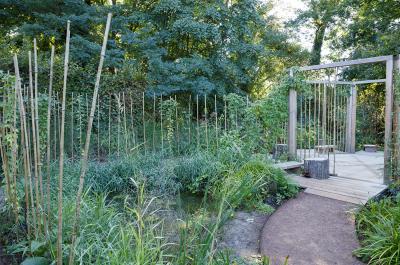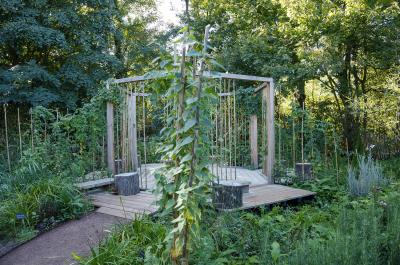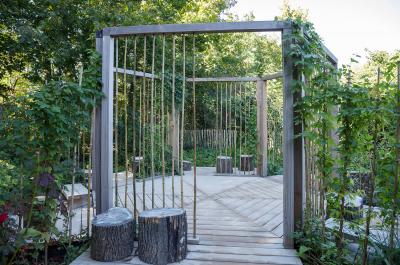12. Regarder, voir
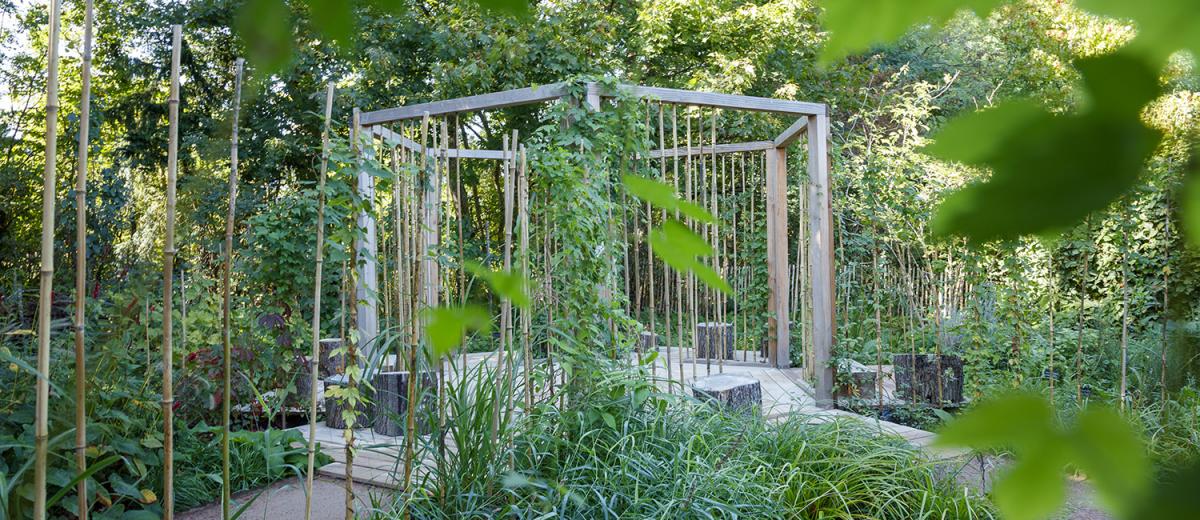
Changing perspectives, being creative and making connections are all factors in resilience. A resilient garden is above all a creation based on observation, an understanding of ecological dynamics, and knowledge of what action needs to be taken. Human beings take up their position once again in the midst of this garden, this time as observers. They become learners, no longer actors shamelessly doing down their environment. From a central observation shelter, visitors are invited to view their gardens with an eye focused on living things, the fauna and flora, and the countless lessons we can learn from them. Whatever the size of their plot, the gardener’s mission these days is to harbour the greatest possible diversity. As a creator of habitats, they must learn the art of benign neglect, of taking life as it comes, and of only intervening in order to serve life, aware that nothing stands in their way and that everything complements everything else.
The observation shelter’s light architecture, halfway between Japanese teahouse and ornithological observatory, matches this intention. It opens onto six scenes: a bed of medicinal plants, a clearing, bocage hedgerows, a garden of guilds (associating several plants in accordance with the principles of the guild system), a melliferous scene much appreciated by insects, and a pond, an essential refuge for biodiversity. The plant palette is symbiotic: close association of different species is mutually beneficial to them, and can even be essential to their survival. Imitating the organisation of their original ecological environment, it gives prominence to native wild plants, which form the basis for biodiversity in our ecosystems and have the required natural capacities for adaptation.
DESIGNERS
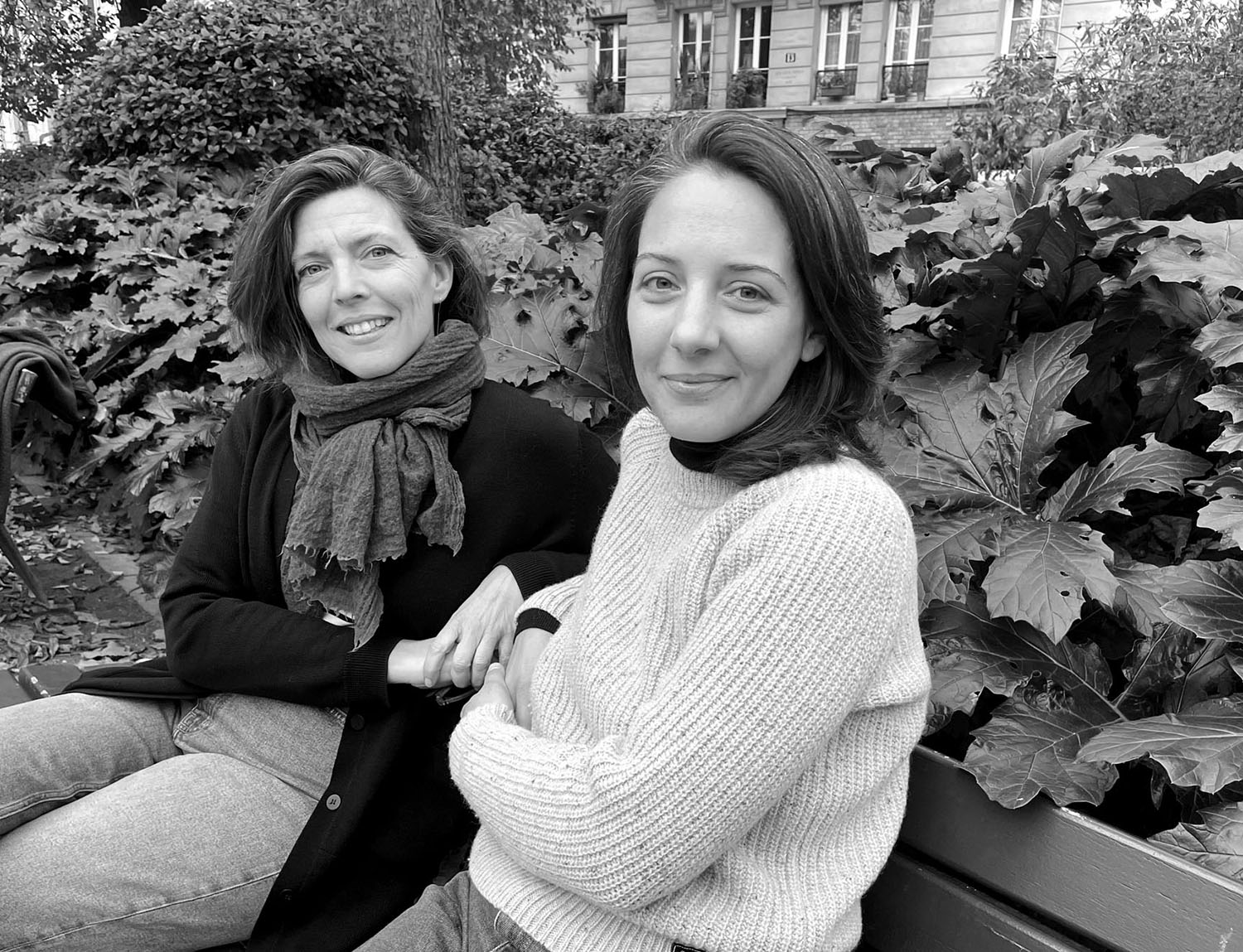
Emmanuelle Capitain and Magali Bertron met at the École du Breuil horticultural school. Naturally enough, their common sensibilities and complementary qualities have led them to work together on selected projects.
A geotechnical and civil engineer who graduated in 2008, Emmanuelle Capitain began her career in the building sector with an end-of-studies project on the rehabilitation of old buildings. Starting off by working in a construction technical control office and then in project management, she designed and monitored the implementation of major private and public projects in Île-de-France. Although essential to users’ and inhabitants’ quality of life, she found that external spaces often remained the poor relations in construction projects. Sensitive to present-day environmental concerns, passionate about all living things and committed to creating quality living environments, she decided to make a career change. After taking the Ifsa & Nature course in landscaping and classes in landscape design at the École du Breuil horticultural school in Paris, she founded MI-DORI in spring 2022. The mission she has assigned herself: to create gardens that support life in all its forms and guide her customers in implementation of sensitive, enlightened management. Her first projects include design of the demonstration garden at the Pariciflore nursery in Seine-Saint-Denis, which highlights the diversity of the Paris basin’s wild flora.
Magali Bertron studied applied arts at the École Estienne, interior architecture at the Olivier de Serres National Higher School of Applied Arts and Crafts (ENSAAMA), and then textile design at the Paris School of Decorative Arts. This wide-ranging artistic study path enabled her to develop complementary multidisciplinary creative knowhow combining working on space with mastery of colours, materials and graphic expression. Upon completion of her studies, she joined the teams at a major Paris trend agency, a workplace where ongoing exchanges, research and creative innovations enabled her to further broaden her spectrum of knowledge in the fields of the arts and design. She gradually began to specialise in working with colour, a practice that she enjoyed above all for its sensorial, artistic aspects, and also because it provided her with a very extensive scope of application. As a trend forecaster and freelance colourist, she acted as a consultant to operators in the textile, decoration, cosmetics and luxury leather goods industries. In 2020, she felt the need to direct her activity towards a field that had more of a connection with nature and ecology: creating with the help of living things, in order to highlight the wild yet refined beauty of the plant world while maintaining the fragile balance of biodiversity, seemed the obvious choice. So she enrolled in a course on the art of landscape at the École du Breuil horticultural school, taking classes in landscape design and obtaining a professional baccalaureate in landscaping. These days, this multiplicity of skills enables her to put her creativity at the service of a wide range of design, scenographic and landscaping projects, with subtlety of colours, a search for harmony and respect for the environment as fundamental common threads.
